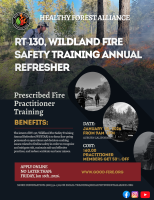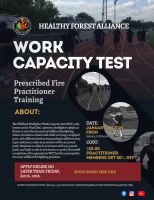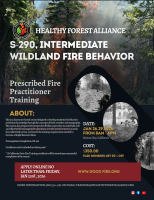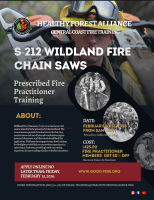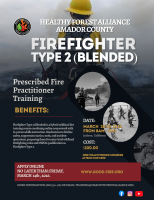"Empowering Excellence, Uniting Expertise: Igniting Tomorrow's Fire Practitioners"
Wildland Fire Safety Training Annual Refresher (RT-130)
COURSE DESCRIPTION:
The intent of RT-130, Wildland Fire Safety Training Annual Refresher (WFSTAR) is to focus line-going personnel on operations and decision-making issues related to fireline safety in order to recognize and mitigate risk, maintain safe and effective practices, and reduce accidents and near misses.
TARGET GROUP:
RT-130 is required for designated positions in order to maintain currency, for all personnel assigned to positions with fireline duties, and for any position assigned to the fireline for non-suppression tasks.
Firefighters who receive initial fire training are not required to take RT-130 in the same calendar year.
Hours of attendance requirements for RT-130 are determined by each agency and issued through agency-specific directives systems.
BIA, BLM, USFWS, NPS, and USFS RT-130 hours requirements are stated in the Interagency Standards for Fire and Fire Aviation Operations (Red Book), Chapter 13.
COURSE CONTENT & DELIVERY:
The RT-130 modules provide a range of training options to meet NWCG position training requirements and agency-specific RT-130 course-hours requirements. The intent of the NWCG Executive Board is that, regardless of the agency-specific RT-130 course-hours requirements, all RT-130 training covers the core components identified below.
RT-130 Core Components
- Local Topics: (replacing Current Issues) Review and discuss local topics and areas of concern that can impact firefighter safety in the upcoming fire season. Topics may include:
- WFSTAR Year In Review.
- Previous fire season statistics.
- Current national and local Predictive Services products for upcoming fire season.
- Local Fire Management updates and expectations.
- Local staffing and availability updates.
- Local and national aviation updates and availability.
2. Incident Reviews and Lessons Learned (replacing Other Hazards and Safety Issues) Review and discuss lessons learned from past local, regional, and national incident response. Topics may include:
- The Lessons Learned Center Annual Review Summary.
- Responding to an incident within an incident utilizing the Medical Incident Report.
- Local lessons learned.
- Case studies, accident reports, facilitated learning analysis, or lesson learned reports.
3. Fire and Aviation Operational Safety: (replacing Entrapment Avoidance) Review and discuss the risk management principles and tools that promote safe and effective incident operations. Utilize the appropriate sections of the IRPG. Topics may include:
- Aviation for fireline personnel.
- LCES, Standard Firefighting Orders, Watch Out Situations.
- Common Denominators of Fire Behavior on Tragedy Fires.
- Common Tactical Hazards.
- Downhill Checklist.
- Equipment.
- Safety Zones.
- Weather and fire behavior.
- Wildland Urban Interface.
- Chainsaw Operational Safety.
- Driving Safety.
- Heavy Equipment.
- SAFENET and SAFECOM reports.
- All hazard response.
- Other hazards and safety issues.
4. Human Factors, Communication and Decision Making: Discuss the complexity of human factors, their impact on communications and decision making. Topics may include:
- Operational Leadership.
- Communication Responsibilities.
- Situational Awareness.
- Command Presence.
- Leader’s Intent.
- Mental Health.
5. Fire Shelters and Entrapment Avoidance: Review and discuss shelter use, deployment site selection, shelter inspections, personal protective equipment, and practice proper deployment techniques. Topics may include:
- Conduct hands on fire shelter proficiency drills in different environments.
- Case studies related to entrapment avoidance.
- Annual updates and reminders for fire shelters from NWCG Fire Shelter and Protective Equipment Subcommittee.
STUDENTS MUST BRING THE FOLLOWING TO CLASS:
REQUIRED MATERIALS FOR THE COURSE
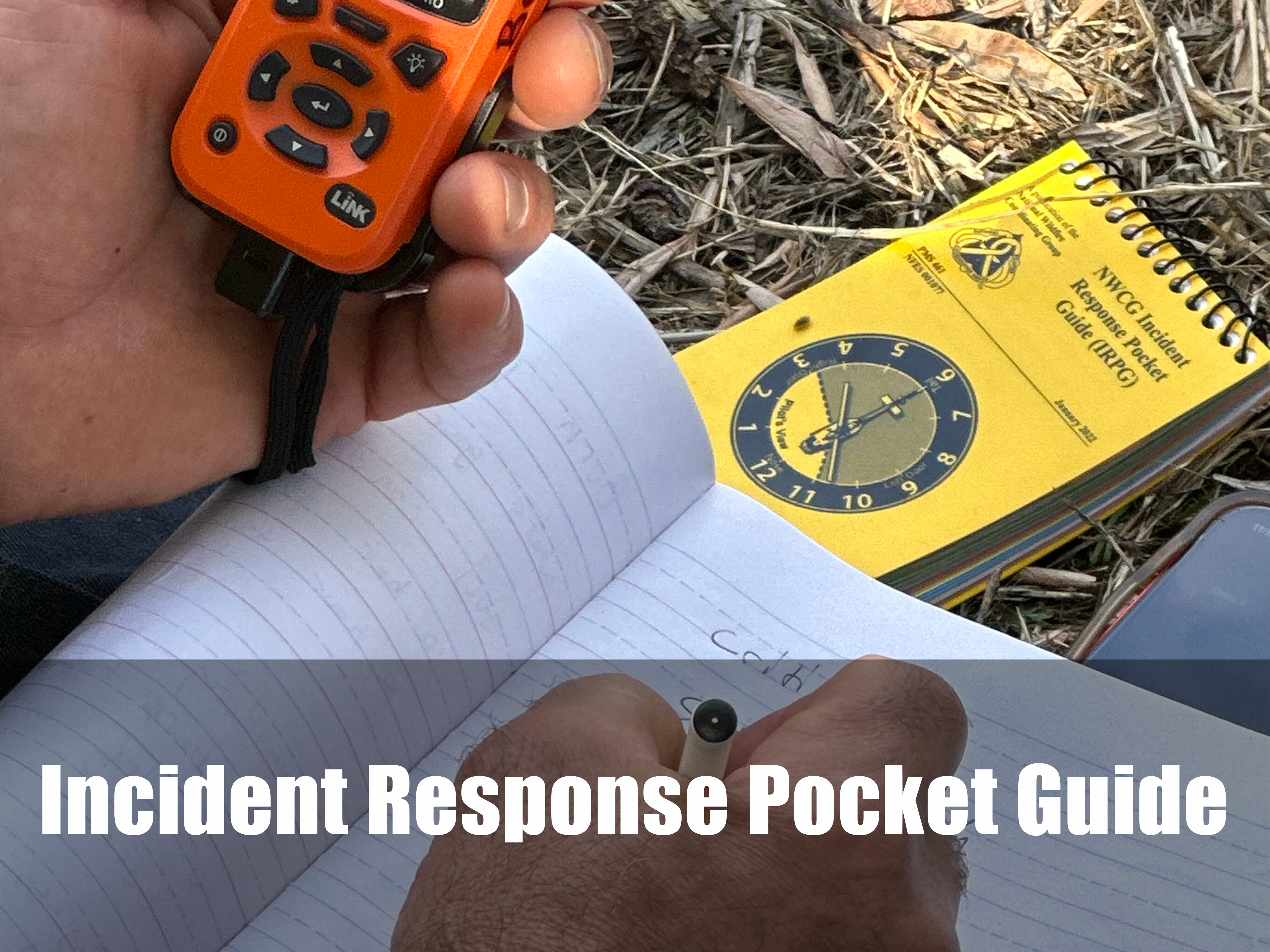
Incident Response Pocket Guide
SCHEDULE FOR Wildland Fire Safety Training Annual Refresher (RT-130)
Full Day Schedule
0800 - 0815
Welcome, Introductions, Course Objectives
0800 - 0815
0815 - 0915
Unit 1: Current Fire Season Review & Lessons Learned
Recent entrapments,
Accidents
National statistics
0915 - 1015
Unit 2: Fire Behavior Refresher
Weather
Fuels,
Topography
0915 - 1015
1030 - 1045
Break
1030 - 1130
Unit 3: Incident Review / Case Study
Facilitated discussion using NWCG videos
1030 - 1130
1130 - 1230
Unit 4: Risk Management and LCES Refresher
Review of 10/18/LCES, risk decision-making
1230 - 1330
Lunch
1230 - 1330
1330 - 1430
Unit 5: Fire Shelter Deployment Practice
Hands-on exercise – timed deployment
1430 - 1530
Unit 6: Lookouts, Communications, Escape Routes, Safety Zones
Table-top scenarios, group exercises
1430 - 1530
1530 - 1600
Unit 7: Medical, PPE, and Work Capacity Refresher
Heat illness, hydration, gear inspection
1600 - 1630
Final Discussion and Q&A
Certification reminder, ICS 225s if applicable
1600 - 1630
1630 - 1700
Course Closeout and Certificates Issued
Instructor signs RT-130 certs or packs
UPCOMING TRAINING
RT-130, Wildland Fire Safety Training Annual Refresher
Work Capacity Test - Arduous, Moderate and Light Available
S-290, Intermediate Wildland Fire Behavior
S-212 Wildland Fire Chainsaws - Central Coast Training
Wildland Firefighter Type 2 (Blended) - Amador County
Please Support Our Corporate Members
HELPING LANDOWNERS PROMOTE HEALTHY FORESTS USING "GOOD FIRE"
how you can help
LEARN MORE ABOUT PRESCRIBED FIRE AND HOW IT CAN BE USED TO PROMOTE HEALTHY FORESTS
FROM OUR BLOG
🔥 Small Teams, Big Impact: The Rise of Micro Prescribed Burn Associations Across California,...
“So You’ve Masticated Your Land for Fire Safety… Now What?” Across California, thousands of...
🔥 The Do’s and Don’ts of Pile Burning for Property Owners in California When used correctly, pile...

